By Caroline Blanchard and Camila Rodrigues
Foodborne illnesses affect nearly 48 million people on a yearly basis. Food safety is a primary concern not only for consumers but for growers as well.
Lettuce and other leafy greens are notorious for foodborne illness outbreaks since there are few methods for eliminating pathogens from raw produce prior to consumption.
By far, the most common type of produce grown in greenhouses and other controlled environment facilities in the United States is leafy greens. Cucumbers, tomatoes, peppers, and strawberries are other popular greenhouse crops, and like leafy greens, are primarily consumed raw. Because there are few methods to remove pathogens from raw produce, or a kill-step, pathogens present from seed to spoon have the potential to cause illness. Preventing pathogen contamination is essential to providing safe-to-eat produce to consumers.
In January 2016, the Food and Drug Administration released the final rule on Produce Safety, part of the Food Safety Modernization Act (FSMA), first signed into law in 2011. The Produce Safety Rule (PSR) is a mandatory federal standard to ensure that produce is free from human pathogens. The PSR outlines procedures and practices that facilitate the production of safe produce, addressing food safety risks in several different areas from producer to consumer. Coverage under the PSR depends on the commodity, not production type. For more information about what is considered covered produce, visit: https://ncfreshproducesafety.ces.ncsu.edu/defining-farm-and-covered-produce/. Additionally, exemptions from the PSR may be granted based on the size of the operation. To determine whether your produce falls under the PSR, the Food and Drug Administration has developed a decision tree: https://www.fda.gov/media/94332/download.
Separate from the federally mandated PSR, Good Agricultural Practices (GAP) Certification is a third- party audit program for growers, which is aligned with the FDA PSR. While GAP certification ensures that growers are following the PSR, it does not replace the inspection conducted by the FDA for FSMA compliance. Additionally, the FSMA-PSR outlines the minimum requirements for compliance, whereas GAP certification has further requirements beyond those outlined in the PSR. While stricter, GAP certification can open additional market options for growers. To learn more GAP certification, go to https://instituteforfoodsafety.cornell.edu/resources/nys-grown-certified/good-agricultural-practices-gaps/.
Table 1. Basic Differences Between Buyer Requirements and Regulations
Potential Points of Contamination
Contamination can be introduced to produce from several different sources at any point in the production timeline. Thus, it is important to be aware of potential contamination sources at your facility so growers can take preventive measures to minimize the risks.
Worker Health and Hygiene
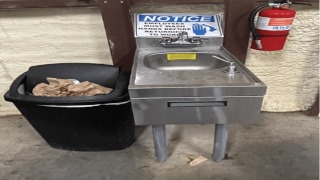
Workers directly handle the crop material at several stages of production including seeding, planting, pruning, and harvesting. During these activities, it is possible for workers to transfer pathogenic microorganisms to the produce.
Referred to as cross-contamination, pathogens can be spread from an infected person to produce through their feces, saliva, and mucus. It can occur when workers do not wash their hands after using the bathroom, eating, drinking, or smoking or when bodily fluids from an ill or injured worker come into contact with the produce. Pathogens can also be brought in on clothing or footwear from outside sources, such as animal feces.
Proper hygiene practices can significantly decrease the potential for cross-contamination. It is important that workers are aware of policies and practices regarding health and hygiene at the greenhouse to prevent cross- contamination of produce. These policies and practices include the following:
- Proper handwashing. Workers should wash hands thoroughly before handling any produce and after using the restroom or eating food. A handwashing station at the entrance to the greenhouse makes it easy for workers to adhere to proper hygiene practices. Also, the handwashing station must be equipped with clean water, soap, paper towels, and a closed trash can (to avoid the spread of paper). The water should also be properly disposed in a container or attached to a drain to prevent contamination.
- Eating, drinking, and smoking. Food should be consumed before entering the greenhouse area in designated break areas outside the production site.
- Clothing, footwear, and personal protective equipment (PPE). Clean clothes should be worn when working in the greenhouse to prevent contamination from other areas, particularly if coming from working in the field. Shoes should be inspected for dirt, animal feces, and plant material before entering the greenhouse area. Designated greenhouse shoes or a shoe-washing station can be used to prevent contamination from outside sources. In addition, PPE can be worn to provide further protection. An example of PPE is using nitrile gloves to harvest produce. It is important to continue to follow proper handwashing procedures even if PPE is used to harvest or work with the crop.
- Illness and injury. Workers who are ill or injured should notify their manager and only return to regular activities once well. First aid kits should be available for injuries in the greenhouse.
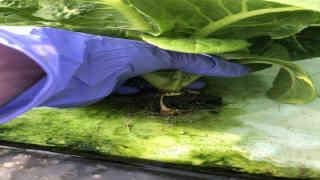
Figure 2. Personal protective equipment (PPE) being used to harvest lettuce.
These policies and practices must be displayed or otherwise made available to all workers. Workers should be trained on all health and hygiene practices and policies, including handwashing. Training can take place when the worker is hired and periodically throughout the production season, but at least annually. Signage can help to ensure workers are aware of proper procedures between trainings.
Soil Amendments
In field production, the PSR outlines guidelines for the addition of soil amendments. In the greenhouse, it is unlikely that soil amendments, including manures, will be used; however, growth substrates need to be stored to prevent contamination from outside sources once brought into the greenhouse. This can include storing the media off the floor in a clean area and periodically checking the cleanliness of the storage area.
Water
Water is one of the major sources for human pathogens to enter the production system. Water is used throughout the growing process in all stages of production as well as in post-harvest practices. Thus, the less contact produce has with water, the less risk for pathogen contamination.
Production Water
In greenhouse hydroponic production, water is the sole delivery method for plant nutrients, making it essential to the production process. The type of system can play a role in food-safety risk. Three main systems comprise hydroponic production. Produce grown in either deep water culture (DWC) or nutrient film technique (NFT) systems are subject to continuous irrigation. These systems are primarily used for leafy green production, where the edible portion of the crop is in close proximity to the irrigation water. Large volumes of water are stored and circulated in these systems to plants throughout their growth cycle. In these types of recirculating systems, contamination events affect all of the produce irrigated with the contaminated water. This could mean an entire DWC bed or NFT system that has to be discarded because of contamination in the nutrient reservoir or deep water bed. Growers also need to be aware of harvesting practices in these systems, being careful to keep water from dripping onto edible portions of the plant when lifting rafts or pulling produce from the systems.
Fruiting crops, such as tomatoes, cucumbers, peppers, and strawberries, are grown in substrate systems to provide adequate root support. In a substrate-based system, water can be recirculated or pass through to drain after irrigating. These systems use drip irrigation, where water is applied directly to the roots on a set schedule according to plant need. It is unlikely that the irrigation water will come into contact with the produce grown in substrate-based systems, but drip emitters should be inspected periodically to ensure that there are no leaks which pose a food safety risk.
It is important to monitor the quality of water that is recirculated within the production system, particularly in systems that use DWC or NFT designs where the edible portion of the produce is in close proximity to the water source. Water temperature, acidity, pH, and the presence of a nutrient source can influence bacteria growth within the system. Monitoring microbial water quality and adjusting it accordingly can help to mitigate pathogen growth. Cleaning the system components between harvests by removing dead roots, plant matter, and algae helps to eliminate nutrient sources for pathogens to grow. Additionally, recirculated water can be treated with EPA-approved antimicrobial pesticides (i.e., chlorine, peroxyacetic acid) or nonchemical methods (i.e., UV-C light system).
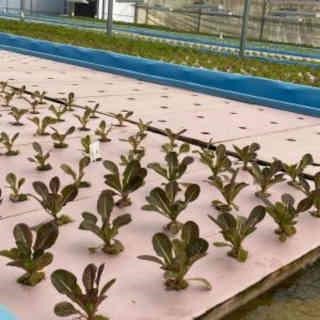
Figure 3. Deep water culture (DWC) lettuce production.
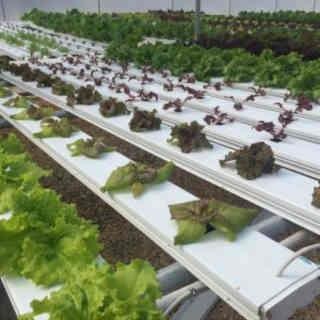
Figure 4. Nutrient film technique (NFT) lettuce production.
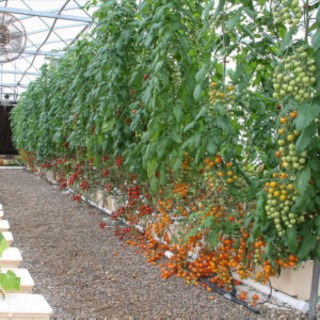
Figure 5. Substrate production of vining crops using drip emitters.
Other uses of production water include water used for greenhouse cooling and water used to mix crop protectants (i.e., pesticides, foliar fertilizers, etc.), which is applied to produce as sprays. In greenhouses in the Southeast United States, evaporative cooling is the primary cooling method used. This method disperses water droplets into the air through either fan-and-pad or fogging methods. The water in the air, though in vapor form, comes into direct contact with produce. Regardless of its use, the water used in these production activities must be assessed for its microbial quality and treated accordingly.
The source of the production water determines its contamination risk. Water from the public water supply is already treated and poses a low risk of contamination. Ground water poses a slightly higher risk as it is not specifically treated for microbial activity and poorly constructed wells can lead to contamination. Surface water poses the highest food safety risk due to exposure to the outside environment. Water sources can be contaminated when feces are deposited into the water source by animals, runoff, leaks, improper discharge, or other methods. Generic E. coli is the microbial indicator for fecal contamination and is used as a standard measure for assessing the microbial water quality for use in agricultural production. Before any water source is used, it must be tested to ensure that it meets standards set by the PSR. The average (geometric mean) amount of generic E. coli in the water source needs to be ≤126 colony forming units (CFUs) per 100 mL water AND the variation, measured as the statistical threshold value, needs to be ≤410 CFUs per 100 mL. Growers can calculate these values by using an online calculator tool (https://agwater.arizona.edu/onlinecalc/default.aspx).
Water that does not meet PSR standards must be treated appropriately before being used in production. This could mean the addition of a sanitizer to the water or altering production practices such as irrigation methods to decrease the likelihood of water coming into contact with the produce.
Post-Harvest Water
Water that directly touches produce or touches food- contact surfaces (i.e., water used to wash hands, tables, containers, crates, harvesting tools, etc.) during or after harvest is referred to as post-harvest water. To be used in post-harvest practices, the PSR requires that there is no detectable generic E. coli present in the water sample. If the water is recirculated or used in batches, the initial batch must be free of detectable generic E. coli and must be of adequate sanitary quality throughout use. Batch water must be changed on a regular schedule to reduce buildup of organic matter and microbes in the water. This schedule can be based on the turbidity, or the cloudiness, of the water.
Post-harvest water can be contaminated by coming into contact with pathogens on the produce or other surfaces that it is being used to clean. After being contaminated, the water becomes a conduit for cross-contamination. The addition of sanitizers to post-harvest water can reduce the risk of cross-contamination. Only use sanitizers that are registered by the EPA and labeled for use with fruits and vegetables. Follow the instructions on the label when applying sanitizers, or any other chemical control (i.e., pesticides), as misuse of pesticides and sanitizers is against the law and can lead to injury and even death. Sanitizers have an optimum pH range in which they are effective against pathogens. Thus, growers should monitor post-harvest water pH and sanitizer concentrations when using sanitizers to ensure their effectiveness.
Animals and Pests

Figure 6. Pest control in the growing area. It should be noted that kill methods for rodent pests should not be used in the production area.
Like humans, animals, both wild and domesticated, can carry and spread pathogens. Though greenhouses are closed off from the outside environment, wild animals still pose a risk to food safety. Rodents and other small animals can enter the greenhouse through doors or other openings and contaminate produce. Domesticated animals (i.e., cats and dogs) that have access to the greenhouse can also pose a contamination risk and can even pose a greater food safety risk than wild animals due to their close proximity with humans. Produce becomes contaminated when animals feed on the edible portion of the crop or when the produce comes into contact with animal feces or urine. Crops that are located off the ground (i.e., vining crops such as tomatoes and cucumbers) are less likely to be affected by contamination with animal feces but may be susceptible to feeding damage. Do not harvest produce that has been contaminated or is reasonably likely to have been contaminated by animals. A no-harvest buffer zone can be constructed around the contaminated produce to minimize the food safety risk. No produce within the established zone will be harvested. The size of the zone will depend on the amount of contamination and the type of irrigation/hydroponic system used.
Monitor animal activity throughout the season, especially before harvesting, paying particular attention to any indication of animal presence inside the greenhouse. If any animals, animal feces or urine, or crop damage is observed, it should be reported, and appropriate measures taken to address the food safety risk posed, including segregation and discard of the entire crop.
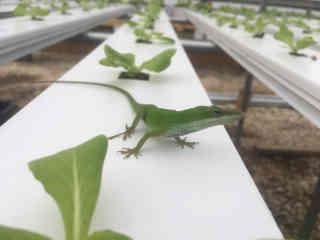
Figure 7. Wild animal present in the growing area.
Preventing animals from accessing the greenhouse will be the first line of defense for growers. Inspect the greenhouse for any cracks or other entry points that would allow rodents or other wildlife access to the crop. Any entrance points identified should be sealed.
Domesticated animals should be excluded from the greenhouse and should not be used for rodent control inside the greenhouse as they can also carry human pathogens. Other animals, such as livestock, should not be allowed to enter the greenhouse. Additionally, the greenhouse should be located at higher elevations from livestock pastures, which will prevent contamination events from runoff. Employees that handle both livestock and greenhouse crops should ensure that clothes and shoes are clean before entering the greenhouse area.
Removing food sources, such as discarded or pruned plant material from the greenhouse can also help to keep pests out of the production area. Implementing a pest control program in the operation is also a recommended strategy to minimize the risks of contamination.
Handling a Contamination Event
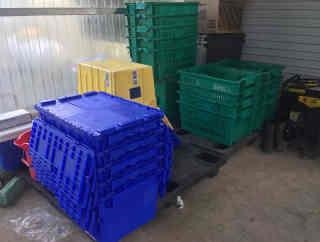
Figure 8. Clean harvesting totes ready for use.
Do not harvest produce that has been contaminated through animal feeding or contact with animal feces. Clearly mark the area that should not be harvested, including the buffer zone around the contaminated produce. Consider possible cross-contamination from irrigation events in determining the buffer zone. Make sure workers are properly trained to be aware not to harvest within the marked area.
When removing contaminated produce from the greenhouse, consider avenues of cross-contamination that could occur and take steps to reduce cross- contamination risk. One protocol to consider could be designating a bin and set of tools for handling contamination events. These tools should cleaned thoroughly and sanitized after being used to remove contaminated produce. Employees should use PPE and wash hands thoroughly before reentering the greenhouse. Once the contaminated produce is removed from the greenhouse, growing equipment in the buffer zone should be cleaned and sanitized. It is a good practice to clean the growing equipment between production cycles to eliminate any pathogens within the system before a new crop is introduced.
Cleaning and Sanitation
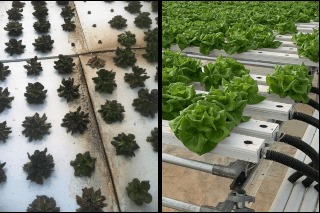
Figure 9. Floating raft (left) and NFT channels (right) should be cleaned and sanitized periodically.
Keeping a clean workspace is vital in food production settings. Contaminated materials (i.e., growing equipment, tools, food-contact surfaces, etc.) can spread foodborne pathogens to produce and humans. To prevent cross-contamination, these materials must be cleaned and sanitized regularly. Wipe down tables and brush or rinse dirt off totes and growing equipment. Soap and water can be used to help fully remove dirt.
After materials are cleaned, they can be sanitized. Sanitization kills microbes present on the surface of a material. Sanitizers used to clean tools, food-contact surfaces, and growing equipment must be effective in killing microorganisms without affecting the safety of the product. Sanitizers must also have an EPA-approved label for use in food-contact surfaces.
Rafts, tanks, NFT channels and pipes, and seedling trays also need to be cleaned and sanitized on a routine schedule to prevent buildup of microorganisms and further cross-contamination. Equipment and tools that are difficult to clean should be replaced (e.g., channels rafts, and trays).
Record Keeping
Record keeping is an important part of any business and will help to ensure that proper protocols are being followed and that food safety standards are being met. These records can be part of a Food Safety Plan that addresses food safety risks at the farm level. Food Safety Plan records provide details of practices, trainings, monitoring, and corrective actions taken to address food-safety practices. They also include records of test results. Records should include all information that would be relevant to ensure that food safety practices are being observed. This should include the date, responsible person, action or procedure followed, the name and amount of any chemical used, and any supporting documents such as test results. All records provide support that the PSR is being followed effectively.
Example of Records
- Insect and wildlife monitoring
- Pesticide and sanitizer applications
- Cleaning and sanitization logs
- Water testing reports
- Worker health and hygiene training logs and certificates
- Illness and injury logs
- Worker logs (work completed in a particular area of the greenhouse)
- Produce sale receipts
- Corrective actions
Traceability
In the event of a foodborne illness outbreak, it is important to be able to determine how the outbreak occurred in order to take effective actions to prevent reoccurrence. Product tracing allows interested parties to be able to identify where a product came from and who it went to. When done correctly, it allows interested parties to follow production all the way back from purchase to seed. Tracing information can be found on the produce label that includes the farm name and address and a lot code. The lot code is a separate code generated for each type of produce harvested at a particular time in a particular area. A simplified example would be RL-101422-Z3, where romaine lettuce (RL) was harvested on October 14, 2022 (101422) from zone 3 (Z3). This information is helpful for producers too. Growers can test their traceability system by conducting a mock recall or a traceability test to ensure their system is properly working. This way, if a food-safety issue occurs, producers can identify sources of contamination from records linked to a specific lot number as quick as possible.
Source : aces.edu